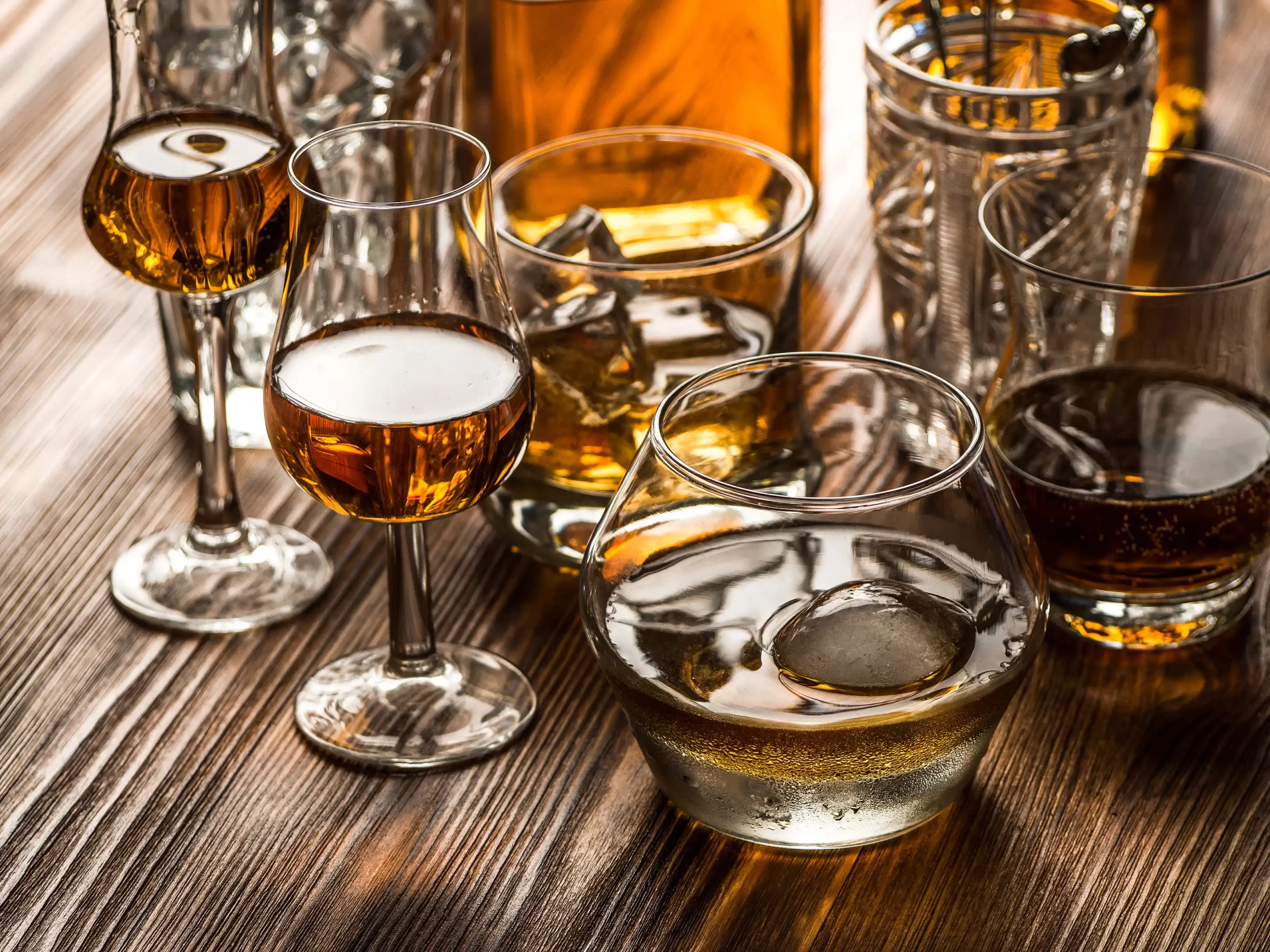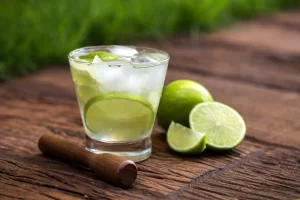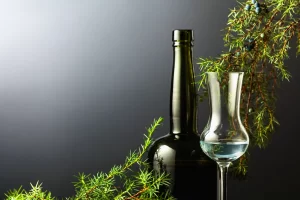Serious whiskey drinkers understand that glassware can help enhance the entire whiskey drinking experience. While some glasses are designed to collect the delicate aromas of the whiskey so they are more pronounced for the drinker, others make it easier to swirl and aerate the whiskey, or even add ice.
Whether you’re a casual whiskey drinker who wants to purchase appropriate glassware or you’re a regular tippler who’s looking to enhance the sensory experience of your favorite type of spirit, we can help! Not only will we go over the main types of whiskey glasses — we’ll also explain why the right whiskey glass can level up your experience.
Why Does the Type of Whiskey Glass You Use Make a Difference?
While you’d assume that the type of whiskey glass you use is just an aesthetic choice, it can actually greatly impact the taste, appearance, and aroma of the whiskey you are drinking.
Enhancing Appearance, Flavors, and Aromas
Good whiskey is meant to be a full sensory experience. It involves examining the color of the whiskey, the way it smells, and, of course, its taste. The best whiskey glasses are designed to help emphasize these three senses so the experience is more enjoyable and memorable.
Some types of whiskey glasses are so vigilantly designed that they enhance desirable qualities of the whiskey — such as pleasant aromas — while masking less appealing features. The right type of whiskey glass can actually make a lower-quality whiskey taste better, and it’ll make the best qualities of a high-end whiskey shine through.
For More Information About the Importance of Whiskey Glasses:
If you want to know more about choosing the right type of whiskey glass, we recommend Whisky Flavor.com’s guide – The Importance of the Right Glass to Drink Whisky.
The guide explains how you should prepare your whiskey glass before you fill it, which can be half the battle and nearly as important as picking the right chalice.
7 Types of Whiskey Glasses
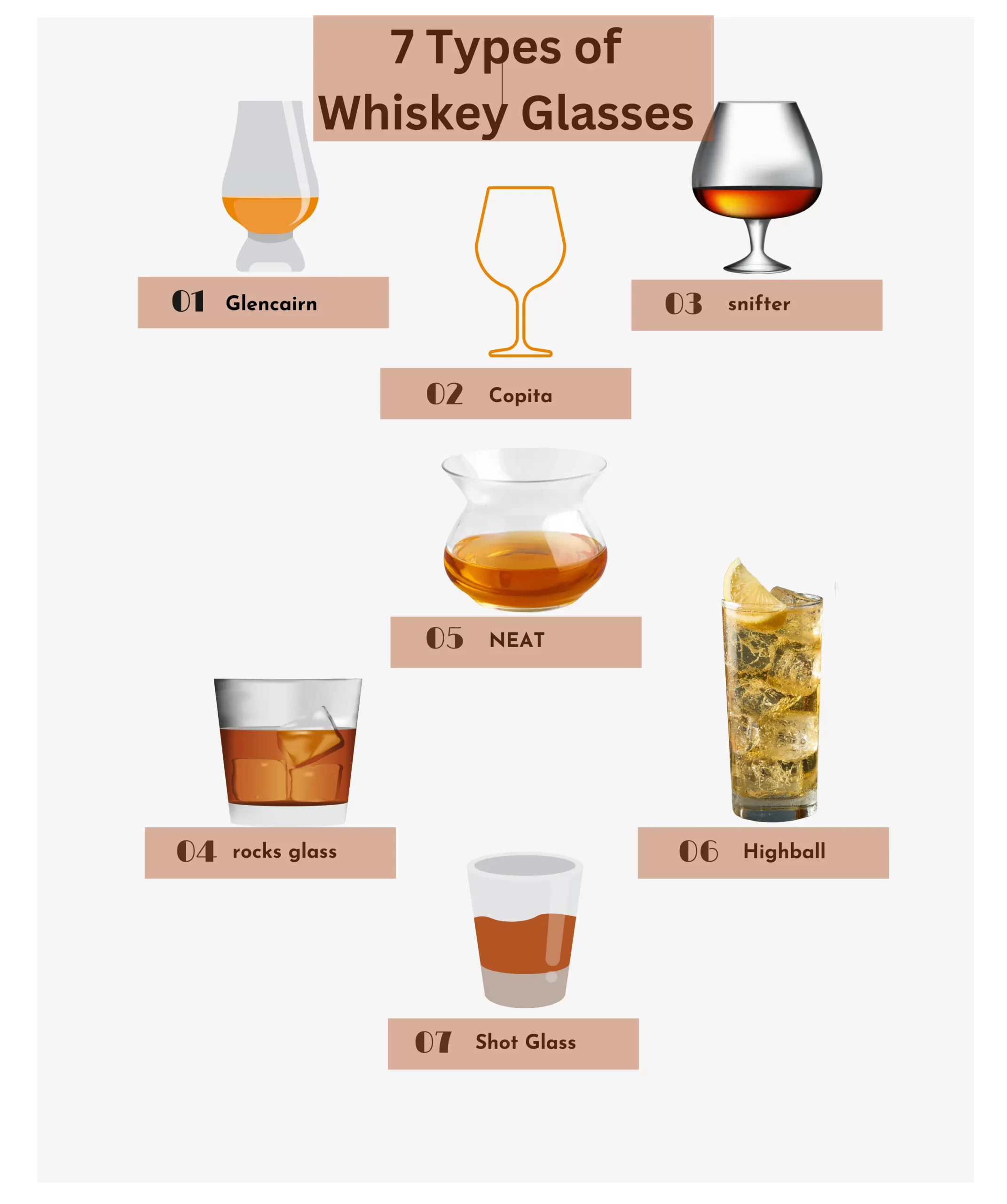
1. The Glencairn Whisky Glass
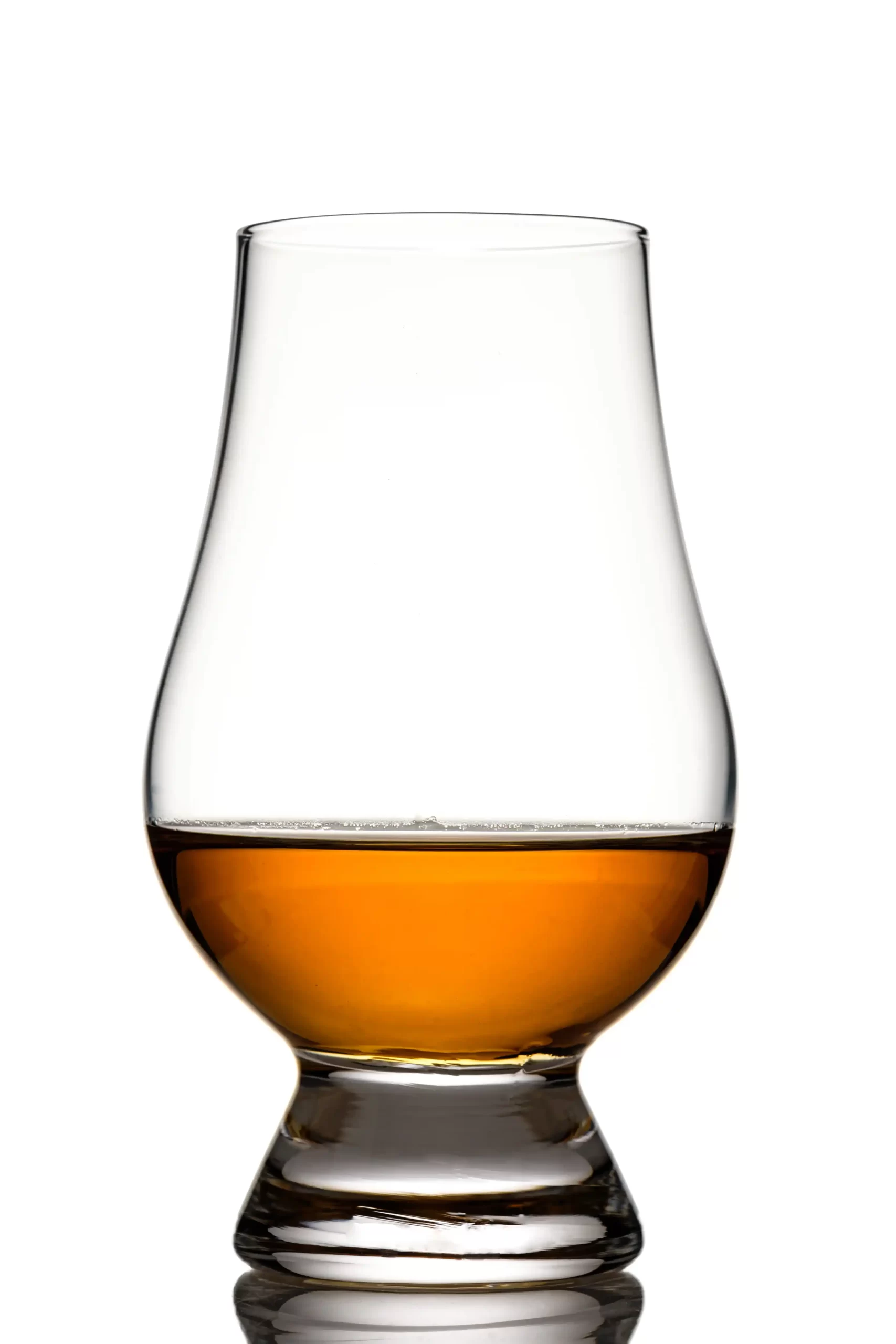
The Glencairn glass is considered to be the gold standard glass for tasting and testing whiskey. This glass originates from Scotland and was first introduced as a way for Scotch Whisky distillers to sample their whiskies straight out of the cask.
Today, the Glencairn glass is a common sight at just about every whiskey distillery in the world. Whether you’re tasting a traditional Scotch Whisky, an American Bourbon, a Canadian Whiskey, an Irish Whiskey, or even a Japanese Whisky, its home, for a short while, will be a Glencairn whisky glass.
Glencairns are the best choice for whiskey tastings because they’re designed to direct the aromas of the whiskey toward the drinker. They also make it very easy to swirl the whiskey in a controlled motion, which helps the drinker detect the whiskey’s complex aromas.
A proper Glencairn whisky glass will have a short and thick base, which makes it easier to grip the glass and swirl the whiskey within. They also have a tulip shape that narrows at the rim of the glass. This helps aerate the whiskey, as well as direct the aromas upward and toward the nose of the drinker.
If you want to know more, WhiskyGlass.com has a useful guide that explains How to Use a Glencairn Glass Properly.
2. The Copita Glass

The copita glass, also called the tulip tasting glass, was forged in Spain for tasting sherry and other types of fortified wine. Since its genesis, it has become a go-to option for tasting various spirits, including whiskey.
While it wasn’t originally designed for whiskey tasting, the uncommon shape and dimensions work exceptionally well for magnifying the nuanced flavors and depths of high-quality, aged whiskeys.
The copita glass has a longer stem than a Glencairn glass, so it’s easier to swirl. But the real advantage of the copita glass is the fact that holding one by the long stem prevents your whiskey from warming.
The bulbed shape also helps direct the aroma of the whiskey toward the drinker’s nose, which, like the Glencairn glass, is useful for sampling and tasting. While it is less the rage than the Glencairn, the copita is a must-have for those that like a temperature-controlled drink.
3. The Snifter Glass

Snifter glasses, also known as cognac glasses, are short and have a fat bottom that narrows dramatically toward the top of the glass. They come stemmed and stemless depending on the drinker’s preference.
The narrow mouth of the glass is designed to focus the aroma of the whiskey in one spot, so these glasses are notoriously beloved by those who enjoy the complex aromas you get with darker, aged spirits and whiskies.
Since they have a profoundly wide bottom with relatively high walls and a narrow mouth, they also make it possible to hold the glass nearly horizontally — useful when examining the color of the whiskey.
Part of the allure of the snifter glass is the fact that it is so closely associated with sophistication and elegance. If you want to sit down by the fire and enjoy a high-quality whiskey with a cigar, you can really set the scene by pouring your beverage into a snifter glass.
4. The Classic Tumbler
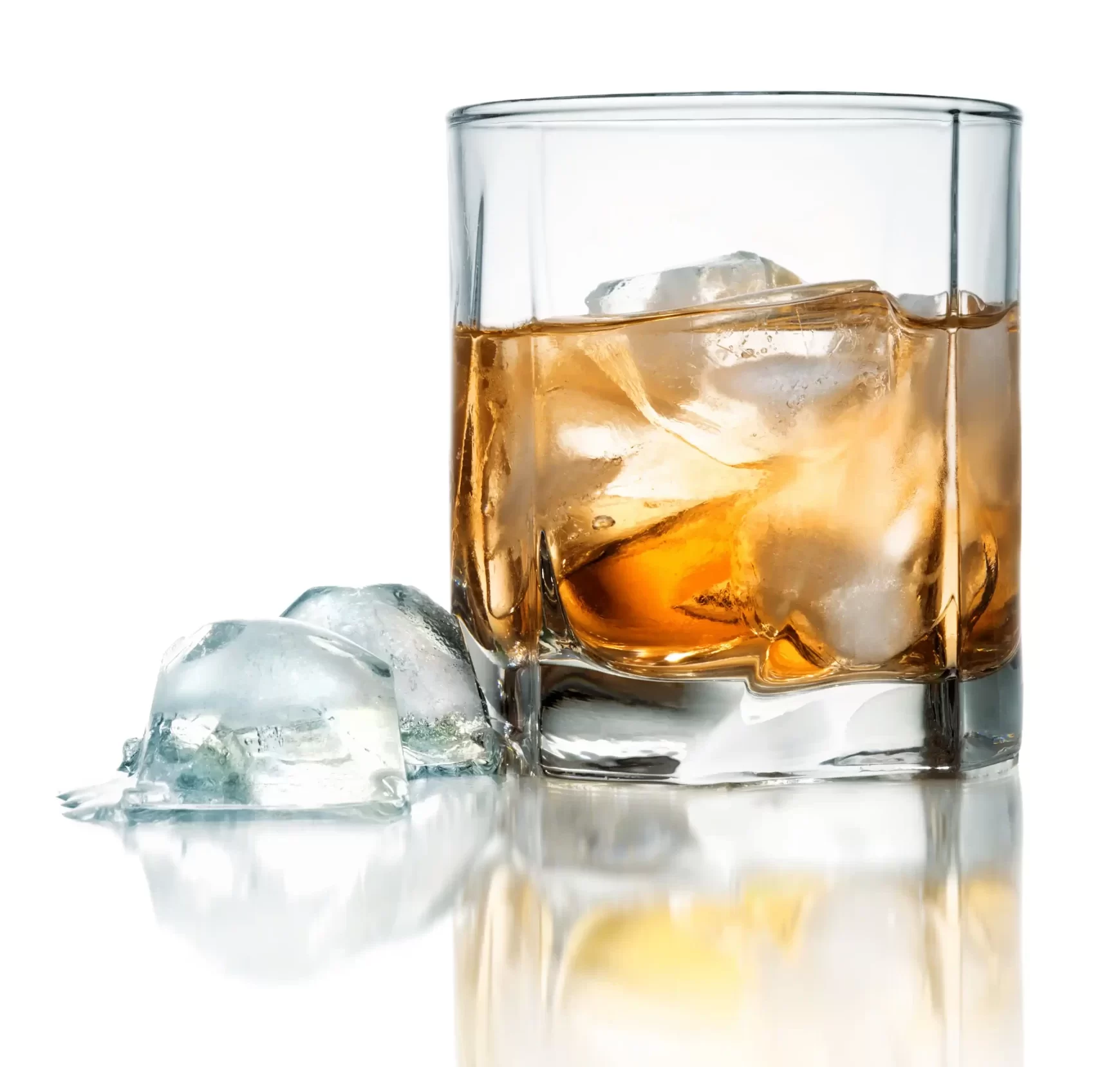
The classic tumbler is also known as a rocks glass, old fashioned glass, or even a lowball glass. They’re generally considered to be the most common type of whiskey glasses in the world.
Thanks to their wide rim, tumblers allow the drinker to appreciate the aroma of the whiskey while accommodating ice, garnishes, and other ingredients. This makes the classic tumbler ideal for those who enjoy drinking their whiskey on the rocks or those who enjoy using whiskey as the primary ingredient in a classic cocktail, such as a Manhattan or an Old Fashioned.
The best classic tumblers are usually made from thick glass, which helps prevent ice from melting. It also gives the glass a really solid feel in the drinker’s hand. While most associate this type of glass with cocktails and large ice cubes, the simple design and wide mouth also work well for drinking whiskey neat.
Overall, the classic tumbler is a truly versatile type of whiskey glass that no bar is complete without.
5. The Highball
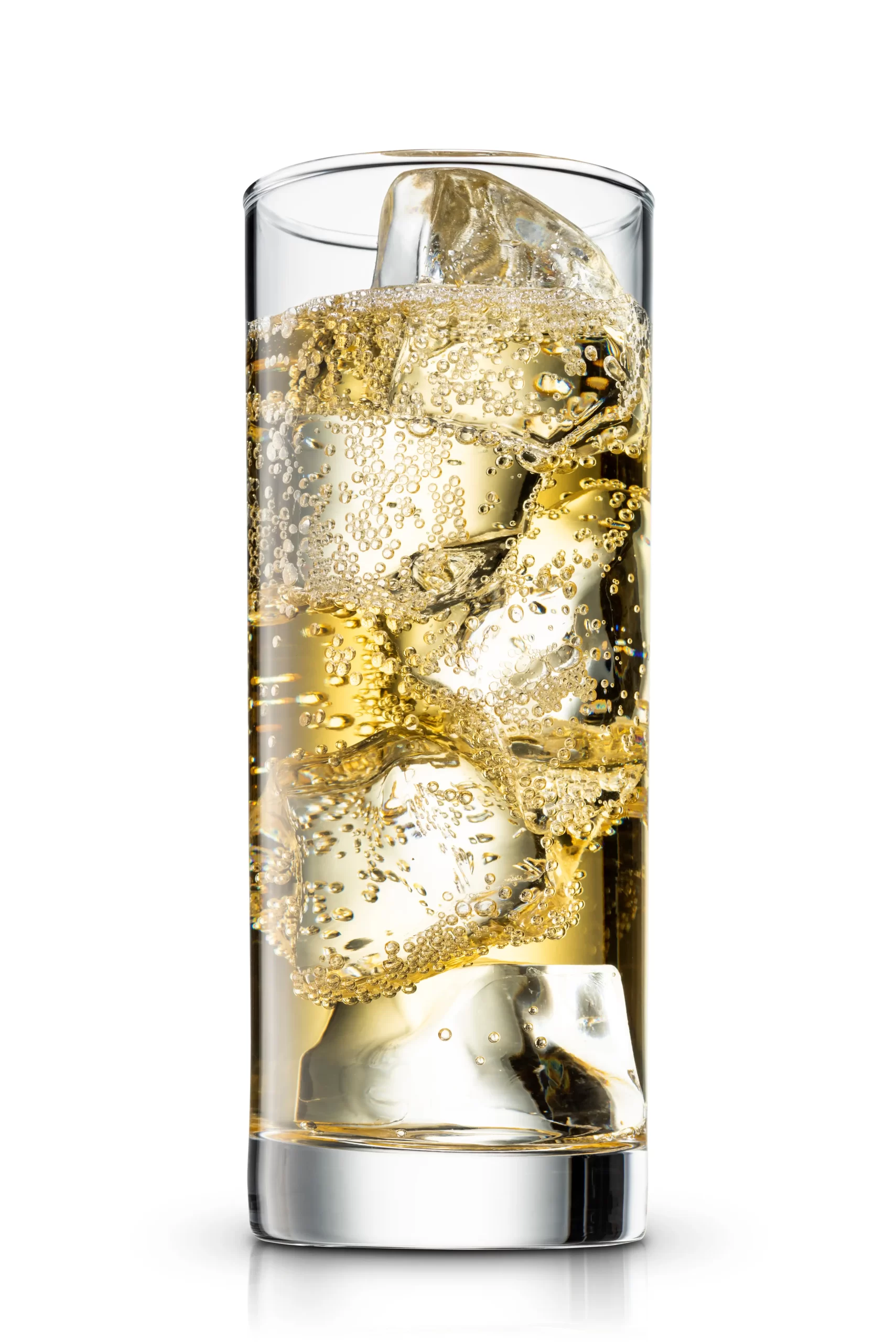
The highball glass is similar in design to a classic tumbler, but it’s much taller. The height gives way to extra room for simple whiskey mixes, such as scotch and soda, whiskey and ginger ale, or a longstanding classic — whiskey and cola.
While highball glasses are used all over the world for just about any type of mixed drink you can imagine, they are particularly popular in Japan. Japanese whiskey is often enjoyed with a high volume of ice.
The thick base and heavy glass helps prevent the highball glass from tipping over, so you should not have to worry about accidental spills. The wide mouth and steep walls also make the highball glass perfect for those who like plenty of ice with their whiskey.
Since the highball glass has such steep sides and can contain such a high volume of liquid, it is an obvious choice for those who enjoy mixing their whiskey with non-alcoholic mixers. However, that is not its only purpose. For many that enjoy ice-cold whiskey, simply mixing their favorite type of whiskey with plenty of ice in a highball glass is a great way to ensure their whiskey remains refreshing from start to finish.
6. The NEAT Whiskey Glass
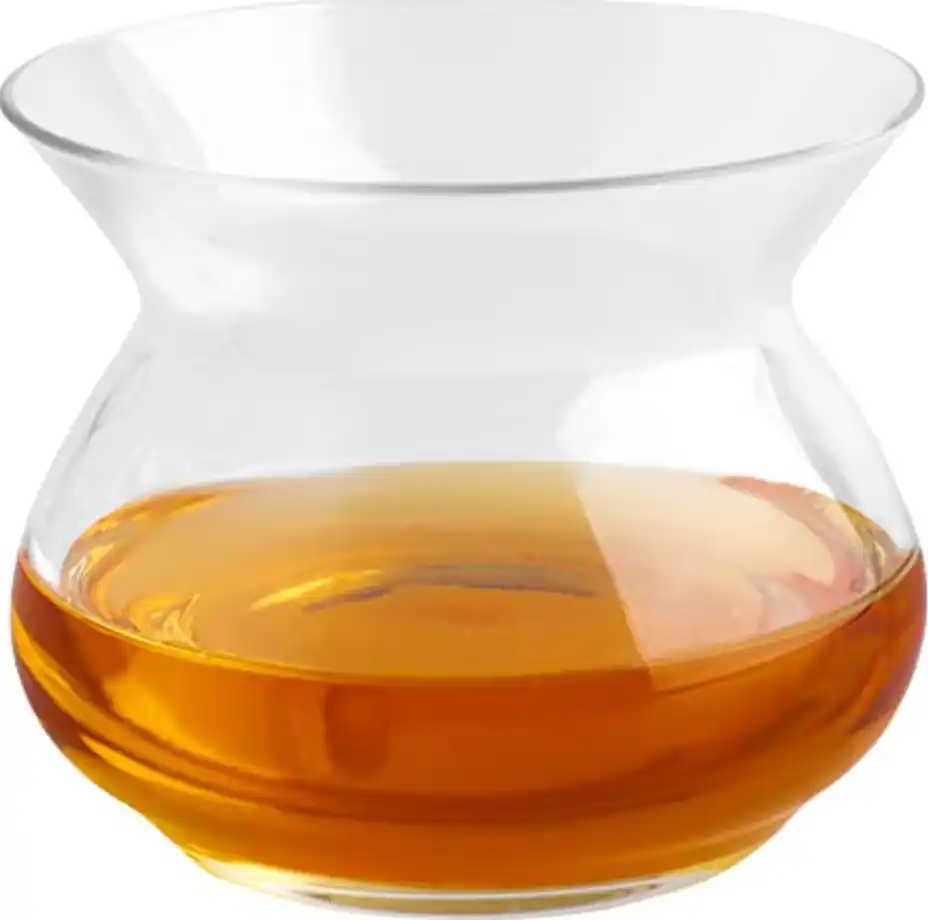
The NEAT whiskey glass is relatively new, but it’s gaining ground. NEAT is an acronym that stands for Naturally Engineered Aroma Technology. While this may sound overly complicated, the intent behind the design of the glass is rather impressive.
This glassware type was engineered to help bring out the subtle aromas and flavors of whiskey. To achieve this, the uniquely flared rim of the glass helps dissipate the aroma of the whiskey so the drinker is not overwhelmed by the scent of alcohol. This allows for a sort of sweet spot where the aromas of the whiskey are more detectable and the drinker isn’t plagued with nose burn.
The large surface area also helps aerate the whiskey. Additionally, it separates the alcohol smell from the other aromas released by the whiskey.
NEAT glasses also have a low profile, designed to bring the whiskey closer to the drinker’s nose. Basically, the NEAT glass takes what has worked for centuries for the Glencairn and copita glasses and slightly tweaks them to help whiskey lovers appreciate the complex yet subtle aromas released by a high-quality whiskey.
To learn more about the NEAT whiskey glass, we recommend visiting TheNEATGlass.com and taking a look at their breakdown of the theory behind the design – Designing the Most Functional Spirits Glass.
While NEAT whiskey glasses are great for experienced whiskey drinkers and samplers, they are somewhat impractical for everyday use, as the unusual design can make them difficult to get used to. But their growing popularity is evidence that they have a role to play in the whiskey world.
7. The Shot Glass
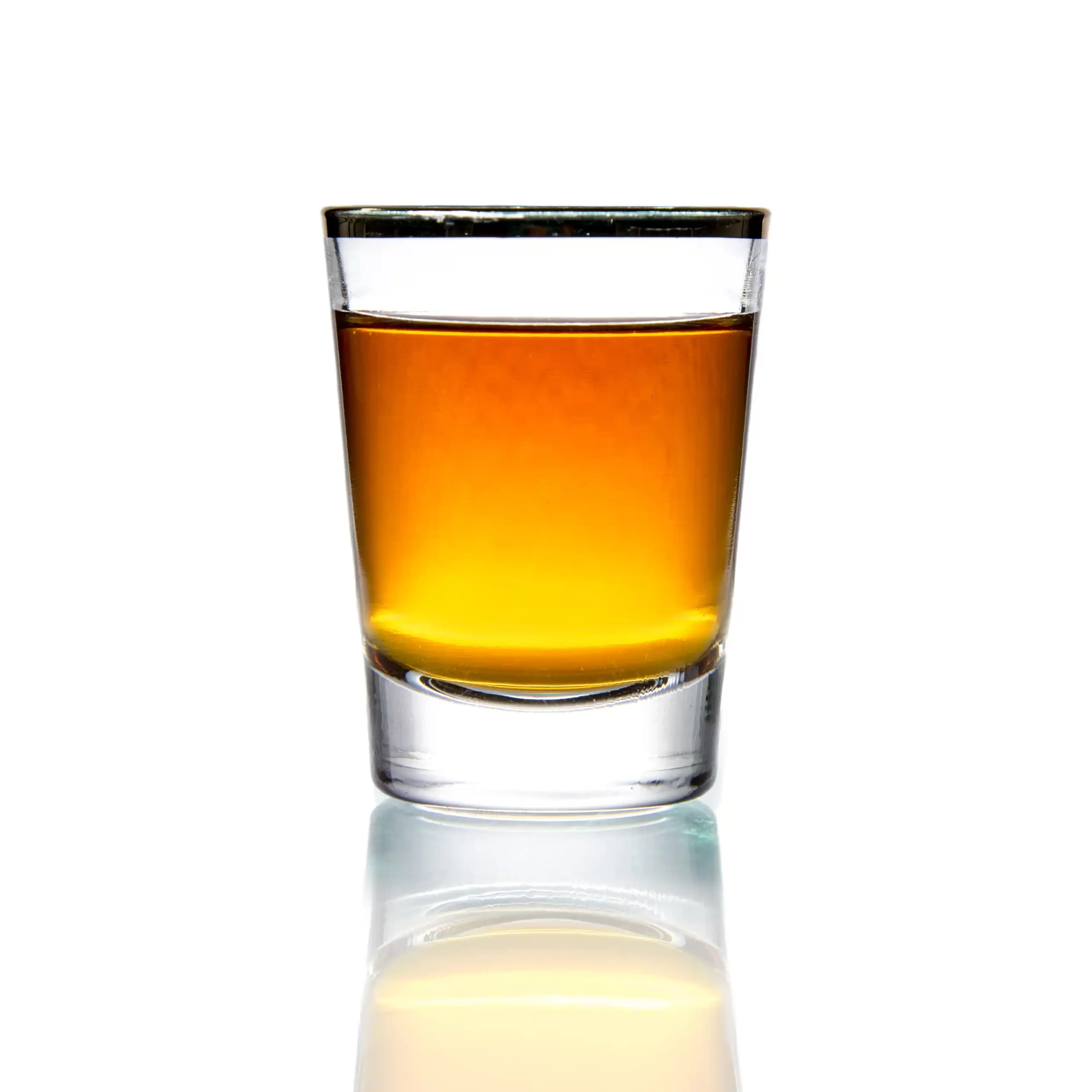
While the shot glass was originally designed to measure various types of liquor in one-ounce increments, it has since taken on a life of its own. It’s now used as the vessel itself.
While a shot glass could seem like an odd addition to a list of whiskey glasses, it has its place in any bar glass collection — especially if you enjoy “shooting” whiskey, rather than sipping it slowly.
Which Type of Whiskey Glass Should You Use?
The type of whiskey glass you use boils down to how you want to taste your whiskey.
If you’re looking to slowly appreciate the flavors, aromas, colors, and other qualities of the whiskey, a shorter tasting glass, like the Glencairn, copita, snifter, or NEAT glass, would be the most suitable.
If you’re looking to enjoy your whiskey on the rocks or mixed with other ingredients as part of a classic cocktail or simple mixed drink, a wider-mouthed whiskey glass like the classic tumbler or highball glass would be a better option.
How Do You Taste Whiskey Properly?
While getting acquainted with the various types of whiskey glasses is important, it is also useful to know how to taste whiskey like a pro. To learn how, we recommend reading World Whisky Day’s step-by-step guide to whiskey tasting – How to Taste Whisky – A Five Step Guide.

